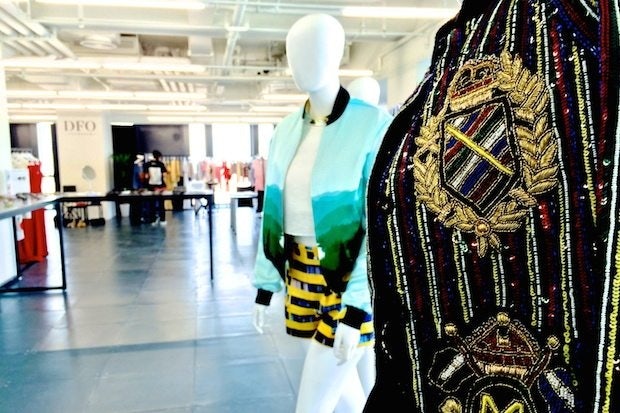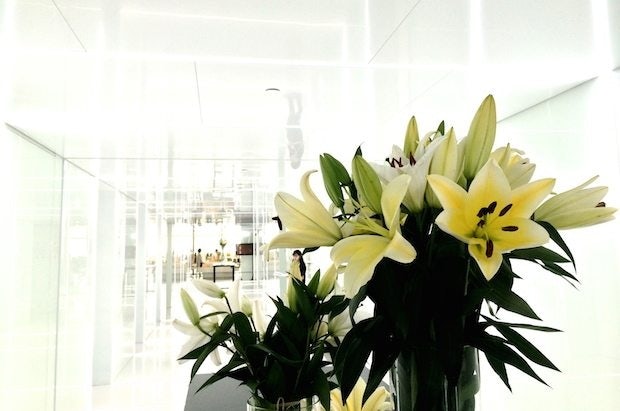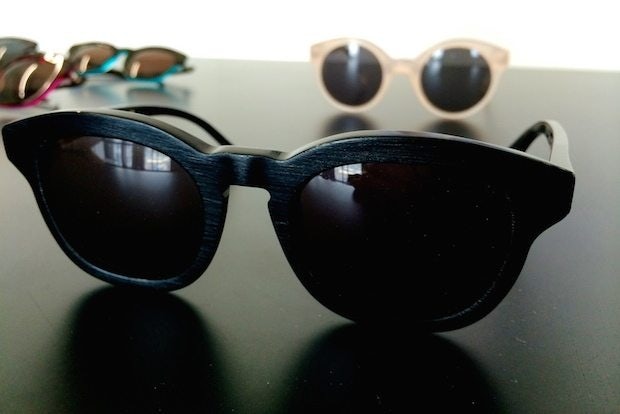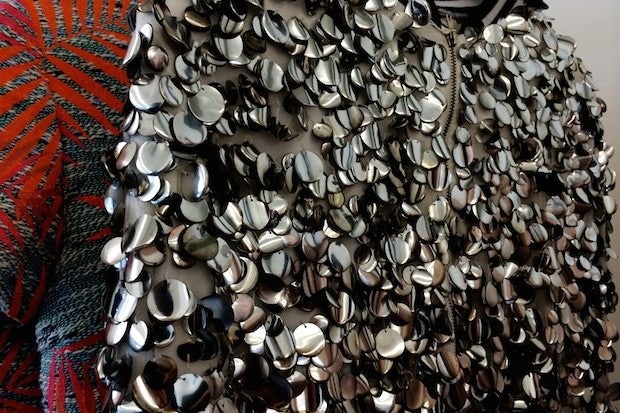
Emerging fashion brands on display at the DFO showroom in Shanghai. (The Marginalist)
Thanks to a growing emphasis on individual style and the expansion of multi-brand boutiques and department stores such as 10 Corso Como, Galeries Lafayette, and and Lane Crawford, small niche fashion labels are taking off in China.
As a result, emerging lifestyle showrooms showcasing these brands are flourishing in the country as buyers from China and other Asian countries seek out the next hot new label. During the most recent Shanghai Fashion Week, many of these showrooms such as Danube Fashion Office (DFO), ONTIME, and Showroom Shanghai presented diverse international and local fashion brands to the Chinese market.
Each showroom has its own unique angle for the Chinese audience. To learn more about one of them, we had the chance to interview DFO Founder Meimei Ding. Hailing from Taiwan with a strong international background that includes experience in America, Shanghai, Beijing, Budapest, and London for studies in visual design at Central Saint Martins, Ding started the DFO concept by using her strong European market awareness to connect buyers and brands. As a fashion sales agency, retail consultancy, and buying office with headquarters in Budapest and a permanent boutique-style showroom in Shanghai, DFO showcases 30 up-and-coming fashion labels from China, Australia, Europe, and more to about 500 buyers.
In the interview, she shared her expertise and details on her business model to show what it takes to introduce a niche label to China’s fashion marketplace.
The collections vary enormously from one space to another. Can you discuss#
DFO's#
collection architecture and what types of buyers you work with?#
The DFO buyers must be professional; they are usually shop owners, boutique owners, buyers from larger groups, and regional distributors. Originally, the collection architecture was based on my knowledge for the Chinese market and personal taste. However, today, almost one third of the collection is driven by the buyers’ direct requests and needs. The reason for this is that DFO helps the buying process from A to Z, starting from communication, logistics, and services. We are a one-stop solution where buyers prefer to experience extended product lines and collections through us.

A close up of designs at DFO's Shanghai showroom. (The Marginalist)
Who do you believe are DFO’s top rising brands for China?#
We have a flamboyant new indie designer named Dora Abodi; she has a futuristic/baroque style and was recently voted by Vogue Italia as one of the top 100 emerging designers.
In contrast, the Australian brands we’re presenting are very market-driven: Cameo, The Fifth, Finders Keepers, and Keepsake. They do 11 collections a year where they sell 44 times a year with a very friendly price point to the Chinese customers.
Lastly, NUBU targets different, more niche buyers. The brand looks very quiet but it’s actually very strong.
The three different spaces have been constructed to three different clientele types, where one won’t necessarily go to another space and vice versa. For example, the sparkling clutches have done fantastically well in China, where these types of buyers are not necessarily interested in the other spaces were showcasing.
DFO can also act as a buyer on behalf of their client. How have you built these relationships of trust#
so quickly?#
Mostly word of mouth, producing good results, and going toward an open-minded market. When we approach a brand or office in Europe which doesn’t already have a clear and precise strategy, nobody really says no to us if we want to have a conversation.

Jewelry brands at DFO's Shanghai showroom. (The Marginalist)
What kind of challenges do you face in running a concept showroom for the Chinese market?#
Introducing the idea/concept to customers takes time, as there is usually a trial period. When they work with us for the first time, we guide them through every step and act as if they are not familiar with the whole cycle. From the time they place an order to the time they receive the product is a three- to six-month cycle. Organization goes from logistics to communication and product selection support. Our clients don’t speak with the brands; we are the intermediary between buyers and brands to avoid miscommunication.
Can you give us a sneak peek of your future projects for the next six months?#
We’ve been speaking to new potential collaborators about next seasons, where we will expand to cater to different segments of the markets. We may also let the show travel to Beijing and Shenzen and not [be] limited to Shanghai only. Given that almost 80 percent of our clients come from outside of Shanghai, a road show would be easier for the local surrounding cities to get to us and vice versa.

The entrance to DFO's Shanghai showroom. (The Marginalist)

Accessories on display at the DFO showroom. (The Marginalist)

Designs being showcased at DFO's Shanghai space. (The Marginalist)
Yanie Durocher is a lifestyle and fashion blogger at The Marginalist.